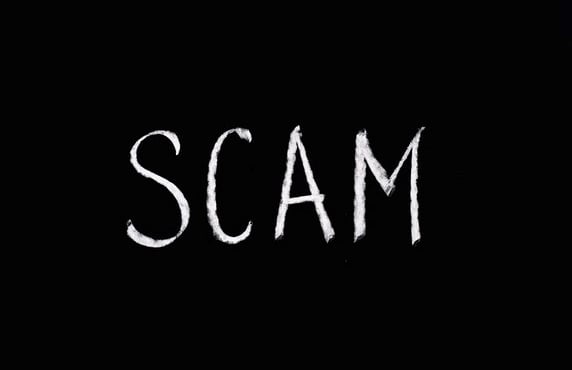8 Safeguards to Ensure You Can Trust Your Law Firm Employees
I continue to be surprised at the number of times I learn that a law firm turned over complete oversight of client property to a non-attorney member...
We've crafted solutions tailored to your firm
The world of insurance for law firms can be confusing, and difficult to navigate. We've created this glossary because these common insurance terms should be easy to understand.
5 min read
 Mark Bassingthwaighte, Risk Manager
:
Posted on June 7, 2023
Mark Bassingthwaighte, Risk Manager
:
Posted on June 7, 2023

Trust account problems remain one of the top reasons attorneys are disciplined here in the US. And while there have been and will continue to be attorneys whose trust accounting activities are egregious and occasionally even criminal, such behaviors don’t account for all the problems. Sometimes it’s as simple as this. The subject attorney just wasn’t diligent about instituting or maintaining proper financial practices in the office and things simply got out of hand. Should you ever find yourself in a similar situation, you should also know that lack of intent, shoddy record-keeping practices, and/or restitution are not going to be effective defenses to a misappropriation or conversion of client funds complaint. With this in mind, here are seven tips that if taken to heart can help keep you on the straight and narrow path when it comes to being responsible for other people’s money.
First, and I know you know this, but it does need to be said: Client funds belong to the client, period, end of discussion! There are never going to be any circumstances under which it would be proper to borrow funds from the client trust account, temporarily or otherwise. It doesn’t matter if you are trying to make payroll, paying your quarterly taxes, paying your bar dues, borrowing from one client to cover a check made out to another client, taking care of personal expenses, or simply wanting to permanently leave the practice of law or even the country. Similarly, you may not keep an unearned advance fee, hold onto non-disputed client funds as leverage over disputed earnings, or apply client funds to that client’s unpaid bill from a prior matter. This reminder that client funds belong to the client needed to be said because the above are all actual examples of the kinds of things some attorneys try to get away with.
Second, always keep undeposited checks and cash in a locked drawer or cabinet even if you intend to deposit the money later in the day. The old-school habit of keeping the bank deposit envelope in the upper right-hand desk drawer of the receptionist’s desk is a bad idea. This is the first place a thief will look. In addition, upon receipt, restrictively endorse and create a log of all the checks that have come in. If any checks end up being stolen, lost, or destroyed you will be able to identify the check(s) and know whom to inform. Since those checks were also restrictively endorsed, they should be much easier to replace.
Third, never disburse the proceeds of any check prior to that check clearing. Here’s why: There is a difference between funds being available, which typically occurs within 24 hours on domestic checks, and those funds being collected funds (meaning the check has cleared), which can take several days and potentially quite a bit longer. Checks can fail to clear for a variety of reasons including a missing, insufficient, or incorrect endorsement; insufficient funds; a drafting error; a bank error; or because it was a forged check just to name a few.
If you disburse the proceeds of a check and that check eventually bounces, you will have misappropriated client funds because the funds of another client will be what covers the check that bounced. This would be true even if you cover the shortfall with your own money and no one appears to be harmed. Making matters worse, what if you don’t have sufficient funds available to cover the bounced check? This does happen! In a zero-tolerance jurisdiction, your license to practice could be suspended for just such an occurrence. A hold time of five to seven business days will protect you in most situations. Wait longer if the check is drawn on a foreign bank account or something just doesn’t feel right — many lawyers have been successfully scammed out of large amounts of money by authorizing a transfer of deposited funds after five to seven days only to find the initial check bounced two weeks after being deposited.
Fourth, never commingle funds in the trust account. For example, non-disputed client funds and funds you have earned are not to be left sitting together in the trust account for an extended period of time nor should the trust account ever be used as the employee Christmas savings account. That said, and only if permissible in your jurisdiction, you might consider keeping a small amount of firm funds in the trust account to cover any account fees or charges. This is one way to prevent client funds from being used to pay a firm expense. A recommended amount would be $50 and should never exceed $200.
Fifth, consider handling trust account withdrawals as follows. Once you earn a fee, send the client a bill reflecting the deduction from the amount remaining in the trust. The bill should state that if there is a question on the bill the client should contact the firm within ten days, otherwise the firm will make the indicated withdrawal at the end of that time. You are going to wait for twenty days from the day the bill was sent, ten days for the bill to be delivered, and ten days to see if the bill is disputed, before withdrawing the earned fee. Too many attorneys withdraw earned monies at the same time a bill is sent, and this can create a cash flow problem should a client ever dispute their bill. The reason for this is that disputed funds must be placed back in trust until the dispute is resolved. If you make a significant withdrawal at the same time the bill is sent, perhaps to pay personal or firm bills, and don’t have the financial wherewithal to replace those funds should a dispute over the bill arise, you’ve got a serious problem.
Sixth, trust account records must include a general ledger and a separate subaccount ledger that tracks all account activity by individual clients. Use an accounting system that can continually track what’s happening in the individual client sub-accounts as well as the general ledger and see that all necessary personnel are properly trained in the rules applicable to client trust fund accounting.
At a minimum, the individual client sub-account ledger must detail every receipt and disbursement, the date of the transaction, a notation on the nature of the transaction, the balance in trust for each client, and the client’s name and address. Any entry or transfer errors should be corrected as soon as they are discovered and fully documented as to why the corrections were made and who made them. Then every month, two reconciliations need to occur. The first is going to be a reconciliation of the bank statement to the general ledger, and the second will be a reconciliation of the bank statement to the individual sub-account ledger.
Of course, these two reconciliations must agree with one another and be balanced to the penny. If they are not, figure out why and correct the problem. You never want to allow the trust account to remain out of balance because it’s always going to be much easier to determine where a misstep occurred at the time it occurred as opposed to trying to figure out what happened years later during a random audit by the Bar.
Finally, support staff should never open the trust account bank statement. Have this delivered directly to you. If these records only come digitally, you will need to access the digital bank statement. Here’s why. Under the rules of professional conduct, you have a duty to monitor the activity in your client trust account. This means you need to look at the bank statement. When doing so, make sure there is a corresponding check for every debit noted there, review the signature on every cleared check for authenticity, and make certain that every debit in the account is appropriate and understood. For example, if there happens to be an unexpected EFT payment sent to a PayPal account, that should be looked into. Once this process is complete, the bank statement may go to the staff person responsible for account reconciliation. When the reconciliation is complete, have the reconciliation report returned to you so that you may do a review of the numbers and check this report against the original bank statement. Then sign and date the report and bank statement in order to document attorney oversight of client funds. The trust account's bank statement must be reviewed each month and you should review the reconciliation report and bank statement together at least quarterly.
Since 1998, Mark Bassingthwaighte, Esq. has been a Risk Manager with ALPS, an attorney’s professional liability insurance carrier. In his tenure with the company, Mr. Bassingthwaighte has conducted over 1200 law firm risk management assessment visits, presented over 600 continuing legal education seminars throughout the United States, and written extensively on risk management, ethics, and technology. Mr. Bassingthwaighte is a member of the State Bar of Montana as well as the American Bar Association where he currently sits on the ABA Center for Professional Responsibility’s Conference Planning Committee. He received his J.D. from Drake University Law School.

I continue to be surprised at the number of times I learn that a law firm turned over complete oversight of client property to a non-attorney member...

2 min read
Counterfeit checks are more of a problem than most realize. Scam artists create millions of these checks each year and while there are a wide...

5 min read
When traveling on business, it can be so easy to grab a burger and fries at a local drive-thru verses taking the time to find a place where I can...